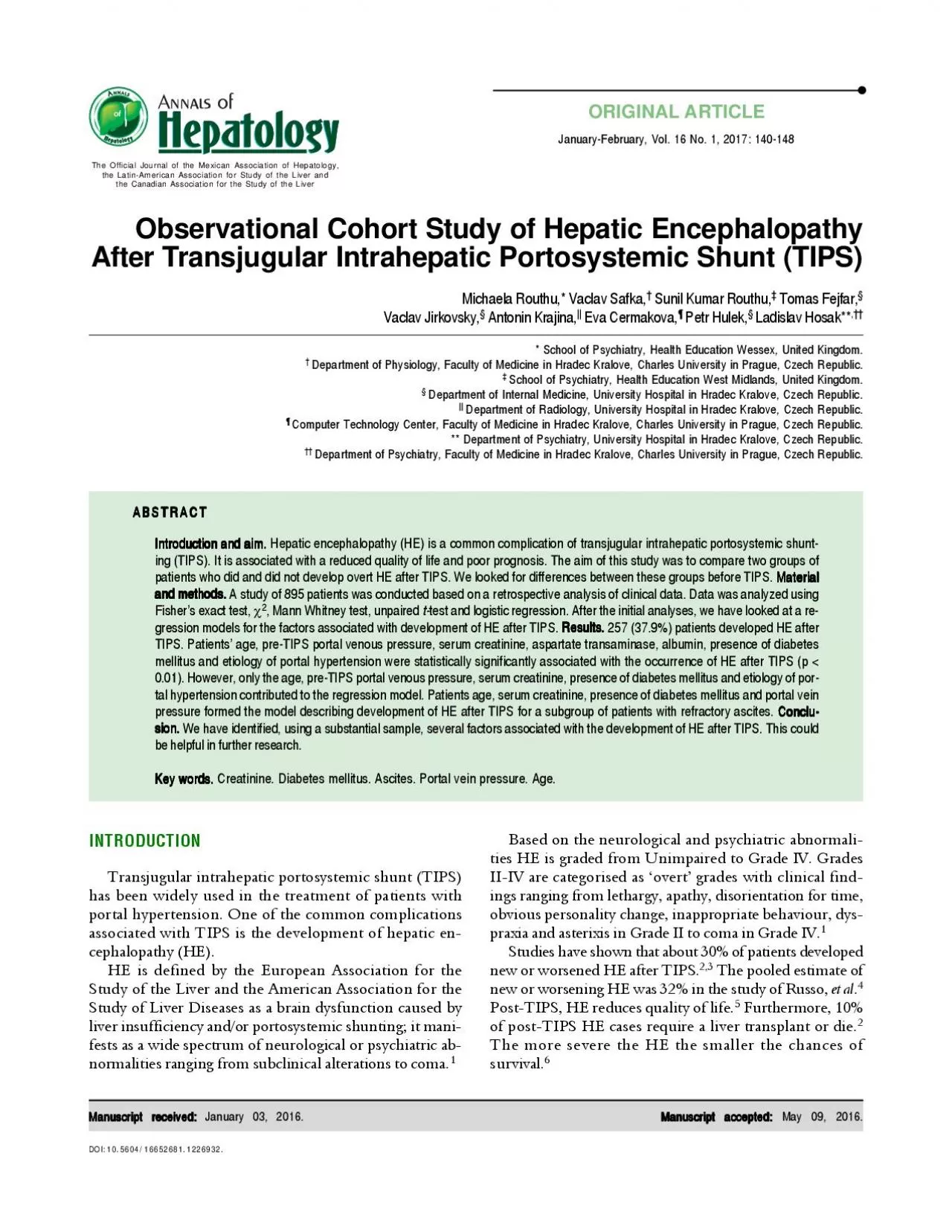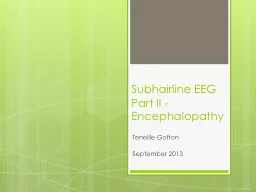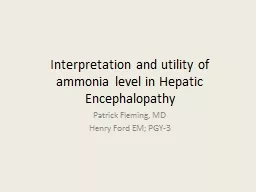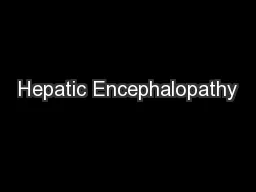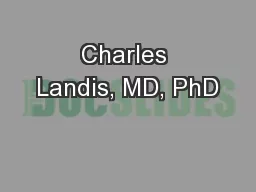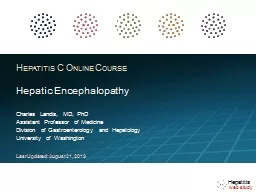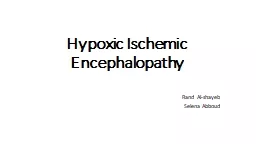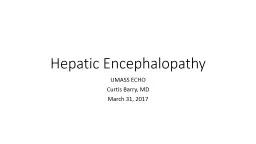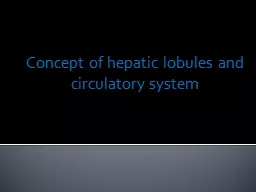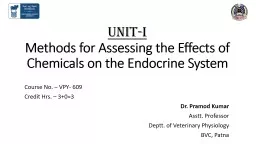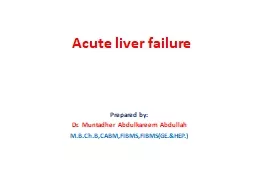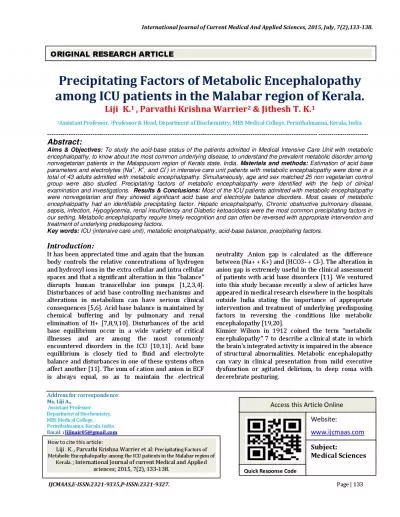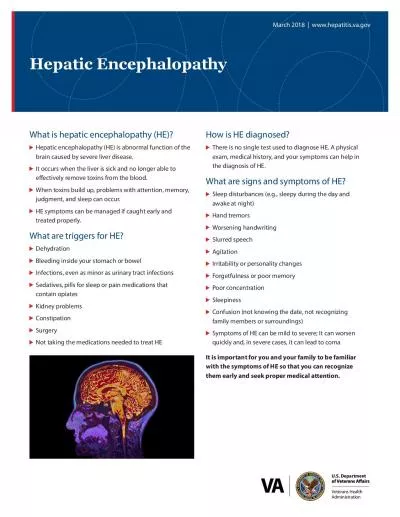PDF-141Observational cohort study of hepatic encephalopathy after TIPS. .
Author : paisley | Published Date : 2020-11-24
2017 16 1 140148 female sex comorbid diabetes mellitus DM nonalcoholic causes of por ascites as the indication for TIPShypoalbuminaemia high serum creatinine hepatofugal
Presentation Embed Code
Download Presentation
Download Presentation The PPT/PDF document "141Observational cohort study of hepatic..." is the property of its rightful owner. Permission is granted to download and print the materials on this website for personal, non-commercial use only, and to display it on your personal computer provided you do not modify the materials and that you retain all copyright notices contained in the materials. By downloading content from our website, you accept the terms of this agreement.
141Observational cohort study of hepatic encephalopathy after TIPS. .: Transcript
Download Rules Of Document
"141Observational cohort study of hepatic encephalopathy after TIPS.
."The content belongs to its owner. You may download and print it for personal use, without modification, and keep all copyright notices. By downloading, you agree to these terms.
Related Documents

